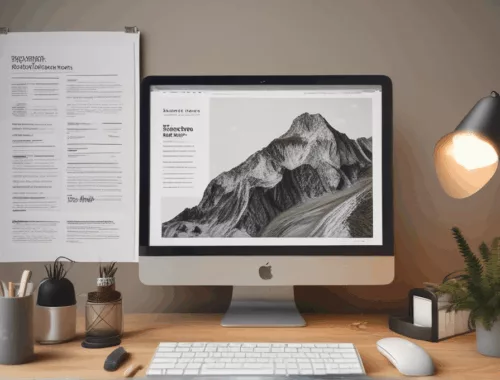
Optimize Your Blog for Mobile: The Ultimate SEO Guide
 – Write for an audience familiar with SEO concepts and Google’s mobile-first index.
– Write for an audience familiar with SEO concepts and Google’s mobile-first index.
1. Understanding the Mobile-First Index
Before addressing the issue of making your blog mobile-friendly, it is crucial to understand Google’s mobile-first index. This indexing method means that Google crawls the mobile version of a website before indexing its desktop version. Consequently, the content on the mobile version of your blog will directly impact your SEO.
2. Mobile-Friendly Content Features
There are several features your blog must have to be considered mobile-friendly. Here are some crucial points:
- Responsive Design: Your blog must have a responsive design to adjust its layout based on the device it is being accessed from, whether it’s a desktop or a smartphone.
- Fast Loading Time: Ensure your blog loads quickly on mobile devices. If it takes too long to load, Google will penalize your site.
- Easy-to-Read Content: The content on your blog must be easily scannable on mobile devices. Use short paragraphs, bullet points, and larger type to make it easier for readers to consume your content on the go.
- Mobile Optimization for Images: Optimize your images to load quickly on mobile devices. Large images can slow down your blog, so using a content delivery network (CDN) or compressing images can help.
3. Tools for Testing Mobile-Friendliness
To ensure your blog is mobile-friendly, use the following tools:
- Google Mobile-Friendly Test: Enter your blog’s URL and see if it passes the mobile-friendly test. Google provides feedback on how to make your site mobile-friendly.
- GTmetrix: This tool tests your blog’s load time and provides recommendations for speeding up your site.
- Google PageSpeed Insights: This tool evaluates your site’s speed on both mobile and desktop devices and provides recommendations for improvement.
4. Mobile SEO Best Practices
Following these mobile SEO best practices will help improve your site’s mobile-friendly ranking:
- Mobile-friendly URL Structure: Ensure your blog’s URLs are optimized for mobile devices.
- Responsive Navigation: Your blog’s navigation menu should be easy to use on mobile devices.
- Responsive Social Media Sharing: Your blog’s social media links should be easy to use on mobile devices.
5. Call to Action
Finally, remember to always optimize your blog for mobile devices. This will not only improve your site’s user experience but also help improve your SEO rankings. Make sure to keep your content up to date and regularly check the speed and responsiveness of your blog on mobile devices. With these tips and tools, your blog will be mobile-friendly and ready for search engines like Google.
You May Also Like

Maximizing Your Blog’s Potential: SEO Strategies for Monetized Success
July 25, 2025
Beginner’s Guide to A/B Testing for Bloggers
May 19, 2025


